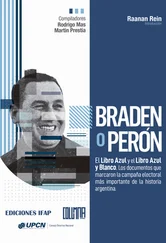This was not a bad policy as far as it went. But it came under increasing pressure throughout the summer of 1979. The Kabul government entirely failed to mend its ways. Internecine strife festered on within the PDPA, and arbitrary arrests and executions continued on a massive scale. In June Taraki and Amin moved decisively against Parcham, a number of whose leaders were sent into honourable exile as ambassadors: Nur to Washington, Wakil to London, Anakhita Ratebzad to Belgrade, Najibullah to Tehran. Lesser figures such as Keshtmand, Rafi, and Kadyr were arrested, tortured, and sentenced to death, though the sentences were commuted to imprisonment when the Soviets protested. 20
And though there was nothing on the scale of the Herat rising, unrest continued to spread throughout the country. At the end of April, Afghan soldiers loyal to the government massacred hundreds of men in the village of Kerala in Kunar province following guerrilla attacks in the area. Unconvincing rumours said that the soldiers were under the command of Soviet advisers in Afghan uniform. On 9 May there were massive risings in six provinces, including the province of Kabul. On 23 June there was a rising for the first time in the capital. Several thousand people demonstrated against the regime, many from the minority group of Hazaras armed with knives, rifles, and machine guns. On 20 July rebels attempted to occupy Gardez, the capital of the province of Paktia: two Soviet advisers were killed. On 5 August, a commando battalion mutinied at Bala Hissar, the ancient fortress on the outskirts of Kabul. The rebels were stopped in their tracks by forces loyal to the government. 21On 11 August a government infantry division suffered heavy losses when it was attacked; some of the survivors went over to the rebels.
These rebellions were put down more or less successfully by government forces. But by midsummer the government controlled perhaps no more than half the country. 22
Taraki had barely got back to Kabul after his meeting with the Politburo in March before the stream of requests from the Afghan government started up again: requests for attack helicopters, requests for fighting vehicles, requests for guns and ammunition. These all fell within the limits of agreed policy and the Soviets did their best to meet them.
But other requests certainly did not. The Afghans began yet again to plead with the Soviet government to send its own troops, disguised if necessary in Afghan uniforms. On 14 April they asked for up to twenty helicopters with crews. On 16 June they asked for armoured troops to guard government buildings and the airports at Bagram and Shindand. On 11 July they asked for Soviet special forces battalions to come to Kabul. On 19 July they asked for a couple of divisions. The requests continued and multiplied throughout August. 23
During these months the Soviet military were divided. Some senior officers were opposed to intervention. But others, including Ustinov, were not. In the circumstances the general staff did what general staffs do: they made plans, they raised troops, they began training appropriate to the conditions that the troops would face if they were ever sent to Afghanistan, and they started to deploy resources to the border. In May General Bogdanov, a senior staff officer, tried his hand at a plan for the introduction of Soviet forces into Afghanistan. He concluded that six divisions would be needed. A colleague who saw his plan advised him to lock it away: ‘Otherwise we’ll be accused of violating the sovereignty of a neighbouring state.’ The plan was brought out of the safe at the beginning of December. But instead of six divisions, the Russians at first sent three, then later added one more. 24
The first troops had already arrived. In February 1979 the American Ambassador, Adolph Dubs, was kidnapped by terrorists, imprisoned in a Kabul hotel, and killed in a botched attempt by government forces to release him. The Russians sent KGB protection squads to Kabul to protect their own senior officials there. 25
Following the Politburo’s decisions in April, elements of the 5th Guards Motor-rifle Division and the 108th Motor-rifle Division began moving towards the Afghan frontier under the guise of training exercises. General Yepishev, the Chief of the Main Political Administration of the Soviet Defence Ministry, who had helped prepare the Soviet invasion of Czechoslovakia in 1968, visited Kabul to give advice and promise military supplies. Taraki and Amin again asked for Soviet troops and were again turned down. The numbers of Soviet transport aircraft flying in and out of Bagram sharply increased. Soviet military and civilian advisers continued to pour into Afghanistan. Rumours persisted that Soviet servicemen were flying helicopters and operating tanks on combat missions. Soviet frontier troops were increasingly involved in clashes with rebel groups along the Afghan border. 26
Another military delegation followed in August under General Pavlovski, who had commanded the force which invaded Czechoslovakia. Pavlovski’s main task was to review the state of the Afghan army and its operation against the rebels, and to make recommendations to Amin. On the eve of his departure Pavlovski asked Defence Minister Ustinov if it was planned to introduce Soviet forces into Afghanistan. ‘In no circumstances!’ the minister answered categorically. 27Pavlovski remained in Kabul until 22 October and was a close witness of the events which led to the overthrow of Taraki by Amin.
Many of the Afghan requests for troops came through the Soviet representatives in Kabul—the ambassador, Puzanov; the Chief Soviet Military Adviser, Gorelov; and the KGB representative, Ivanov. As often happens, the people on the spot were sometimes more sympathetic to their clients’ predicament than to the views of their principals, and often supported the Afghan requests, or at least forwarded them without comment. Within a week of Yepishev’s visit, Amin asked Gorelov to forward a request for helicopters with crews. Ogarkov, the Chief of Staff, minuted on Gorelov’s report: ‘That should not be done.’ The Politburo agreed, and Gorelov was told to remind the Afghans of the reasons why the request had been turned down. When Pavlovski arrived, Amin asked him if the Russians could send a division to Kabul. It would not be expected to take part in combat, but it would free an Afghan division to tackle the rebels on the ground. This request, too, was turned down. A month later Gorelov, Puzanov, and Ivanov came up with an idea of their own. The Soviets should set up a military training centre near Kabul on the lines of the one they had in Cuba—a somewhat disingenuous proposal, since everyone knew that the ‘training centre’ in Cuba consisted of a brigade of combat troops. 28
For its part the Soviet Ministry of Defence had already quietly begun to take measures directly related to the possibility of combat in Afghanistan. In April 1979 its Main Intelligence Directorate (Glavnoe Razvedyvatelnoe Upravlenie, or GRU) ordered the creation of a special battalion, based in Tashkent in Turkmenistan, to consist of Tajik, Uzbek, and Turkmen soldiers from the Central Asian republics who spoke the same languages as the people on the other side of the Afghan frontier. Major Khalbaev was appointed to command the battalion and given two months to complete its formation.
The unit, soon to be known as the ‘Muslim Battalion’, consisted of some five hundred men selected from across the Soviet Union. The main requirement was that they should know the relevant languages and be in good physical shape. Each was expected to have two specialities: radio operator and mortar specialist; medical orderly and driver, and so on. The battalion was equipped with two mobile anti-aircraft guns, known as Shilkas, which could also fire at ground targets. These were manned by Slavs, since no Central Asian specialists were available. 29
Читать дальше












